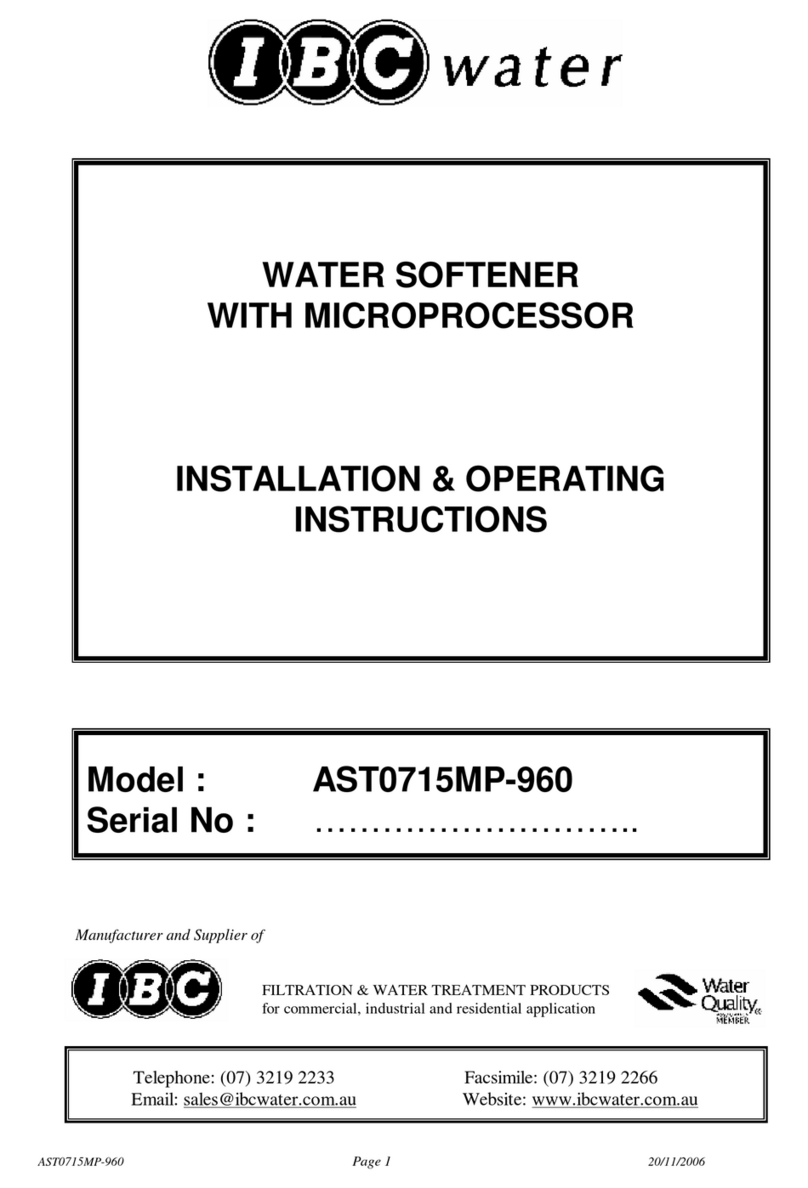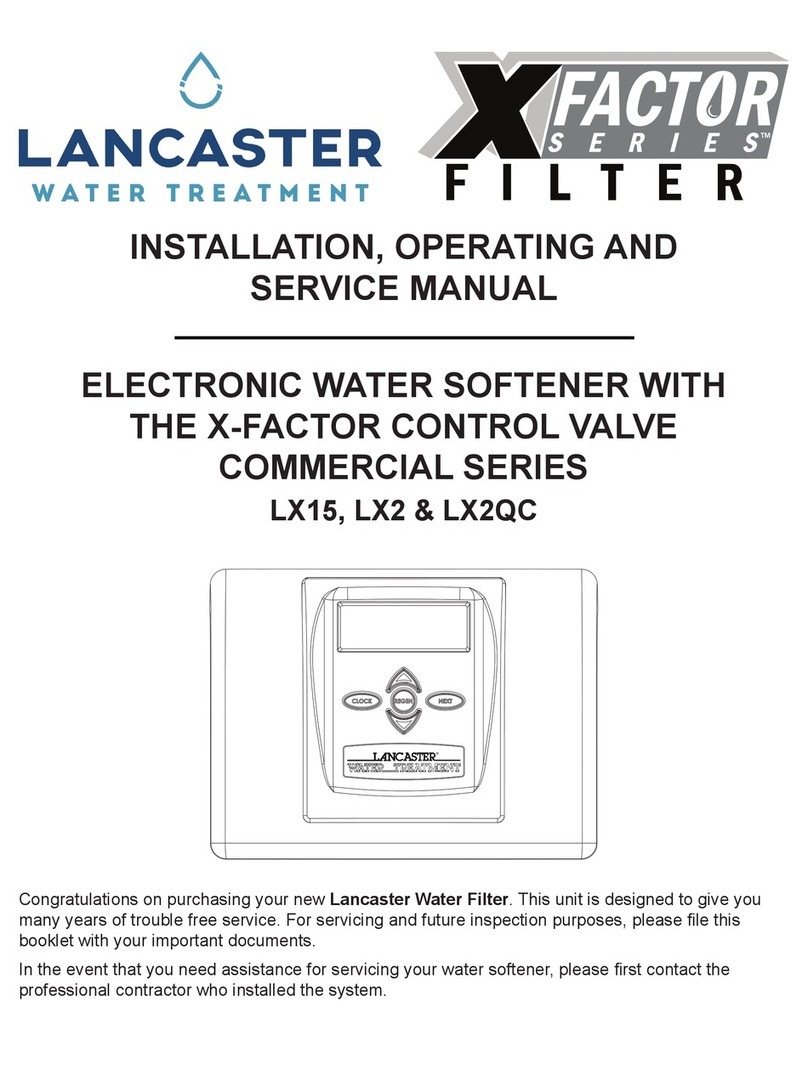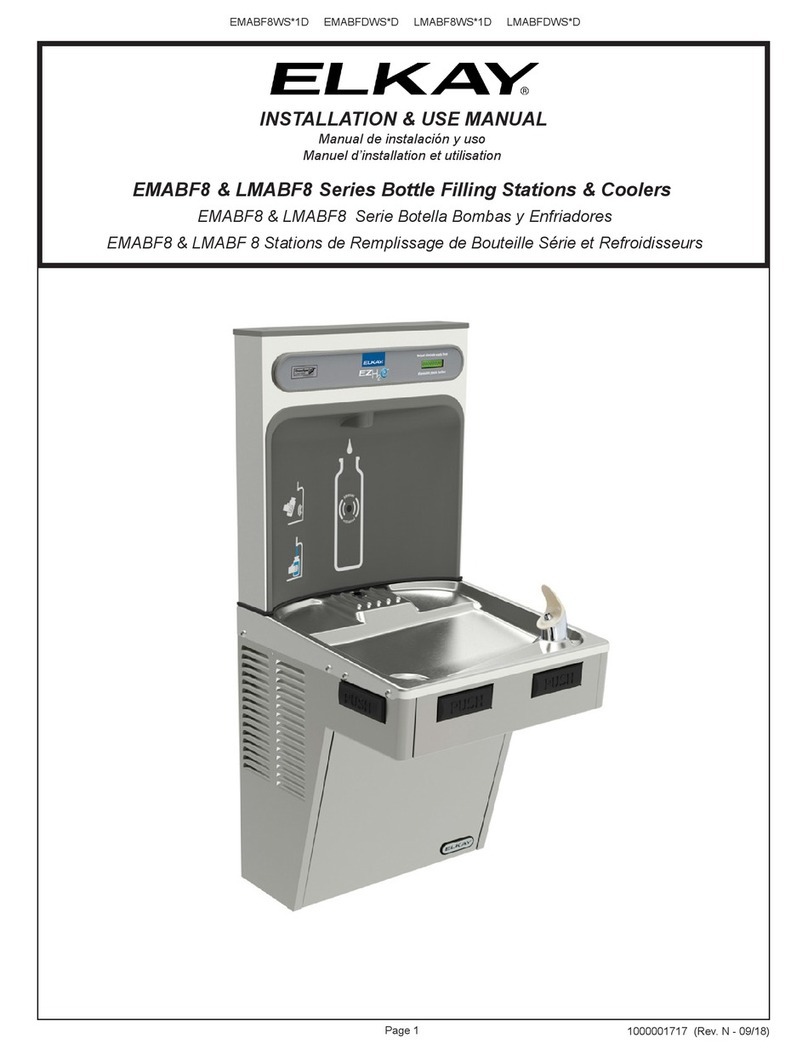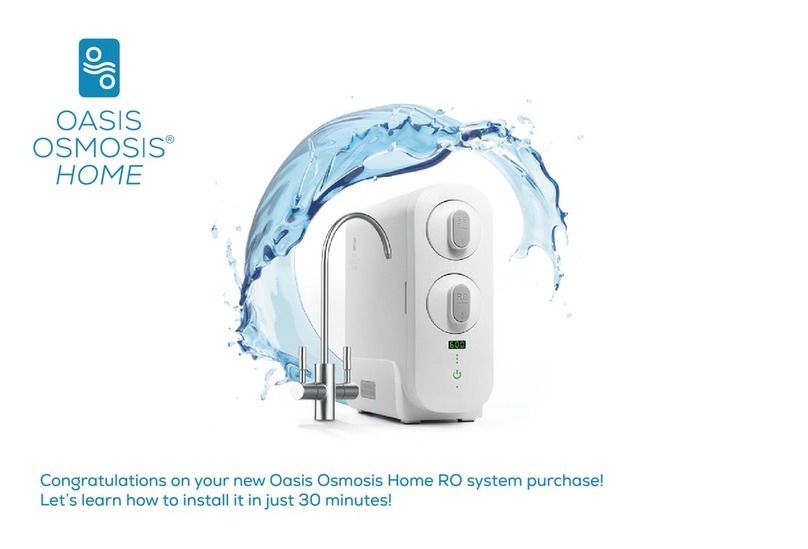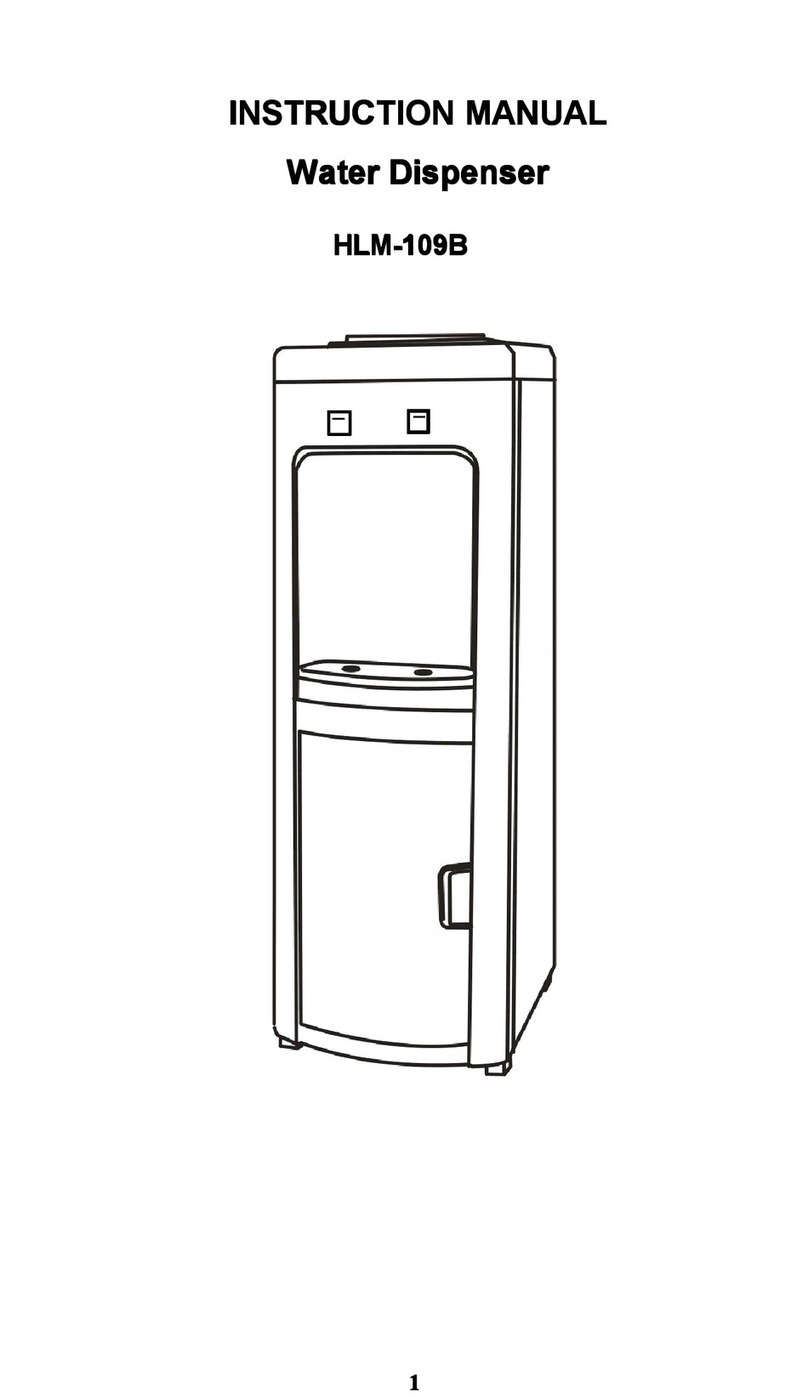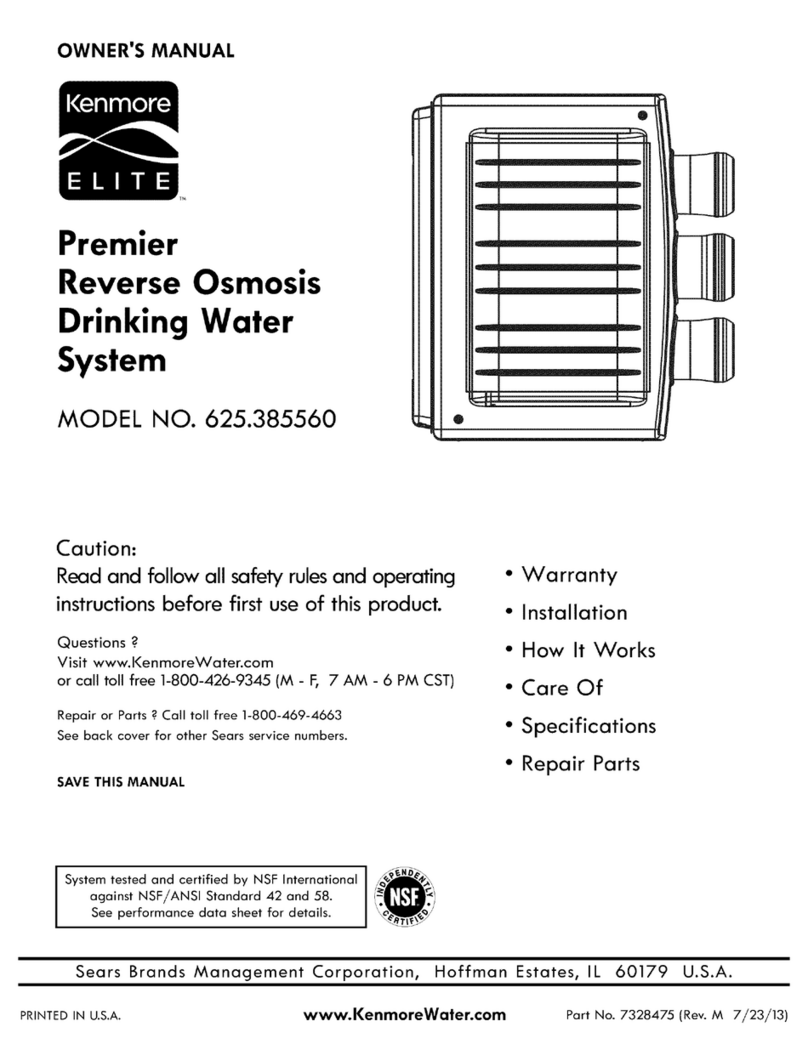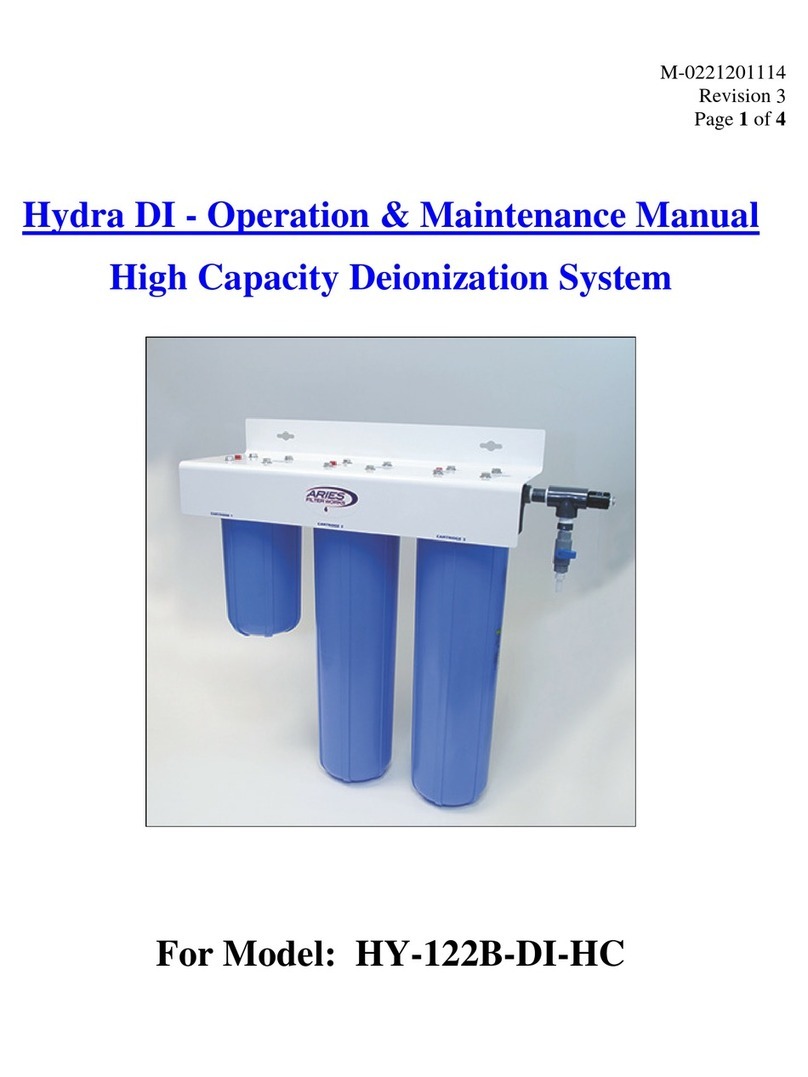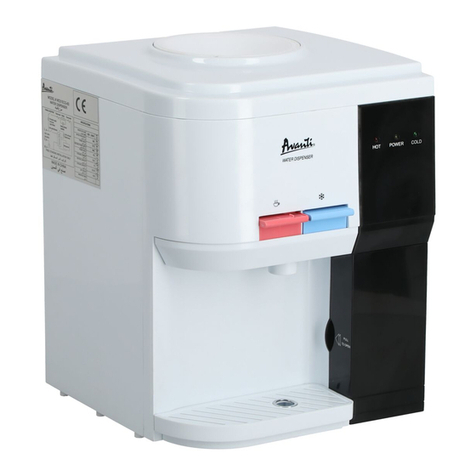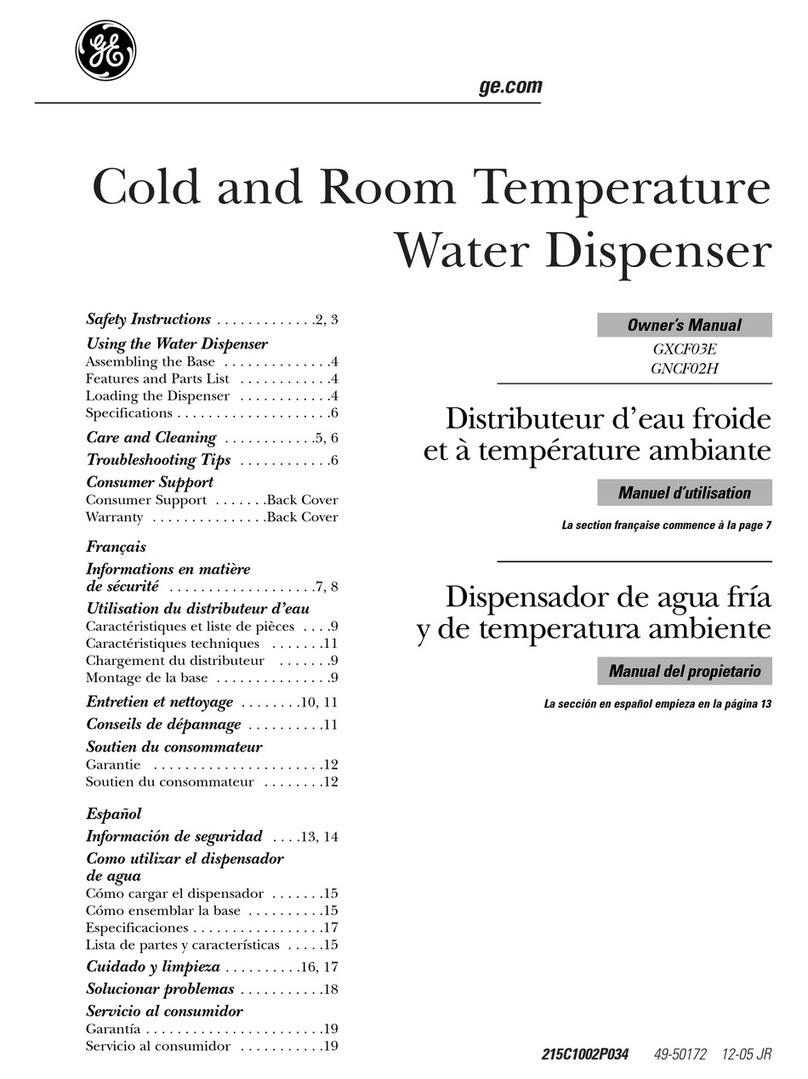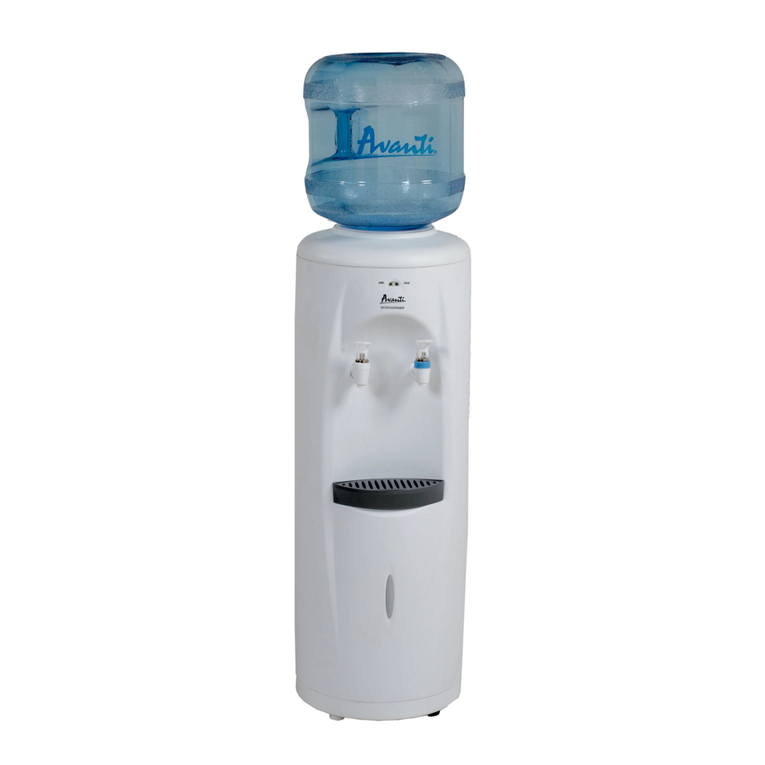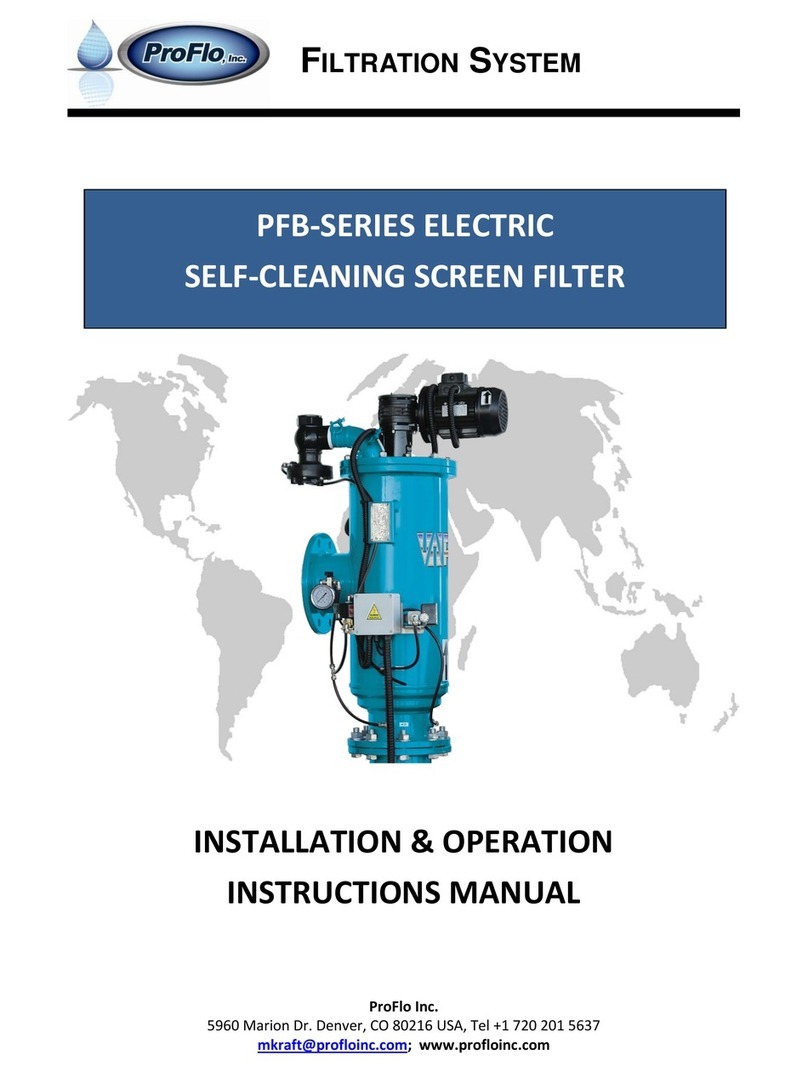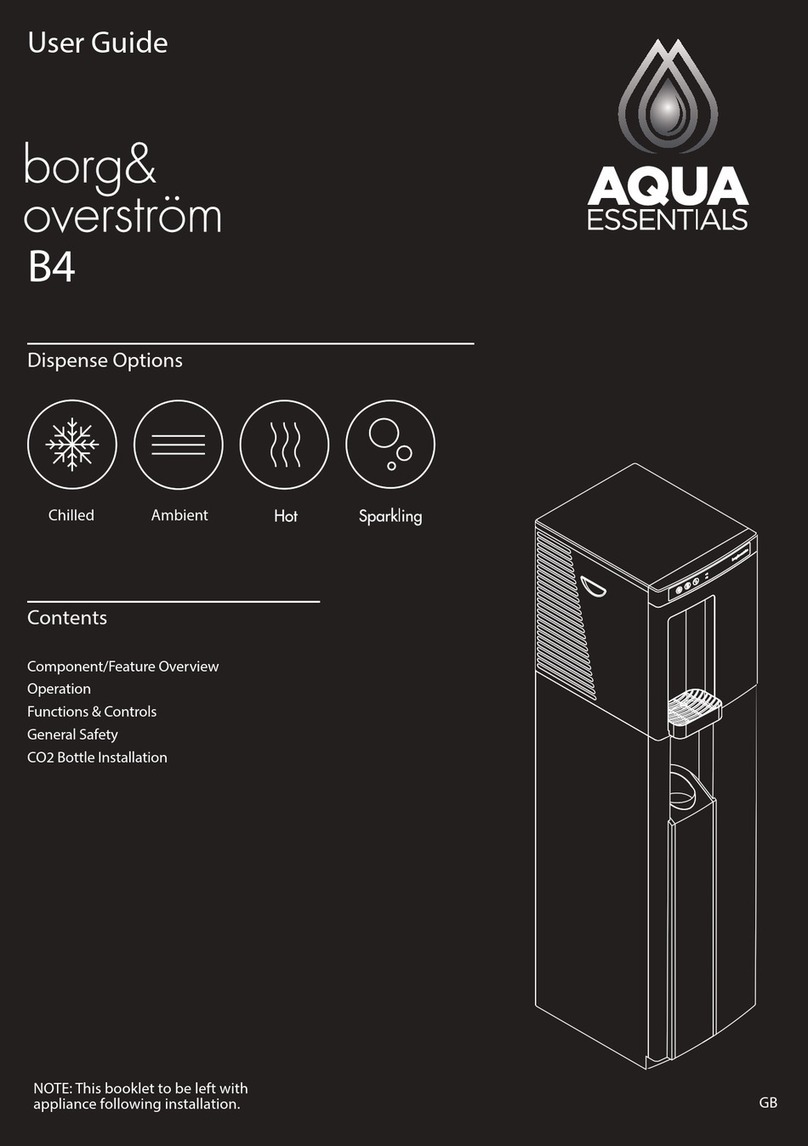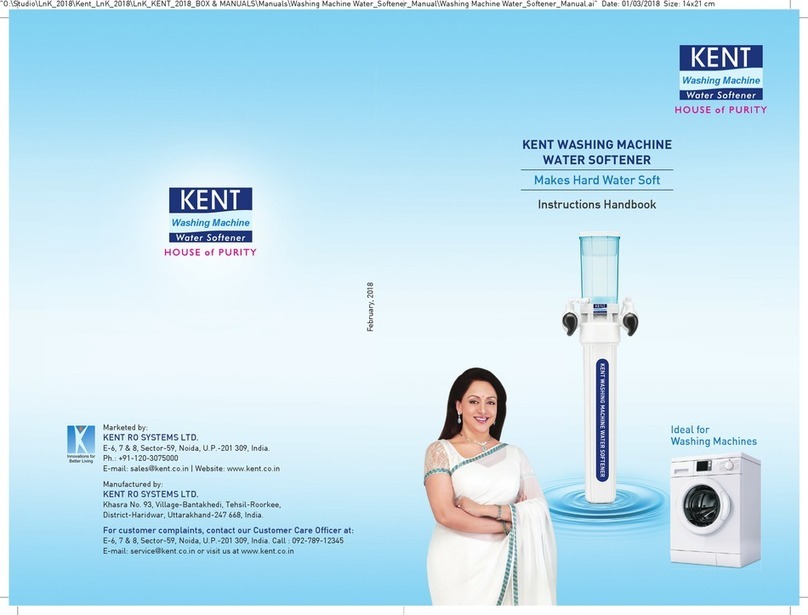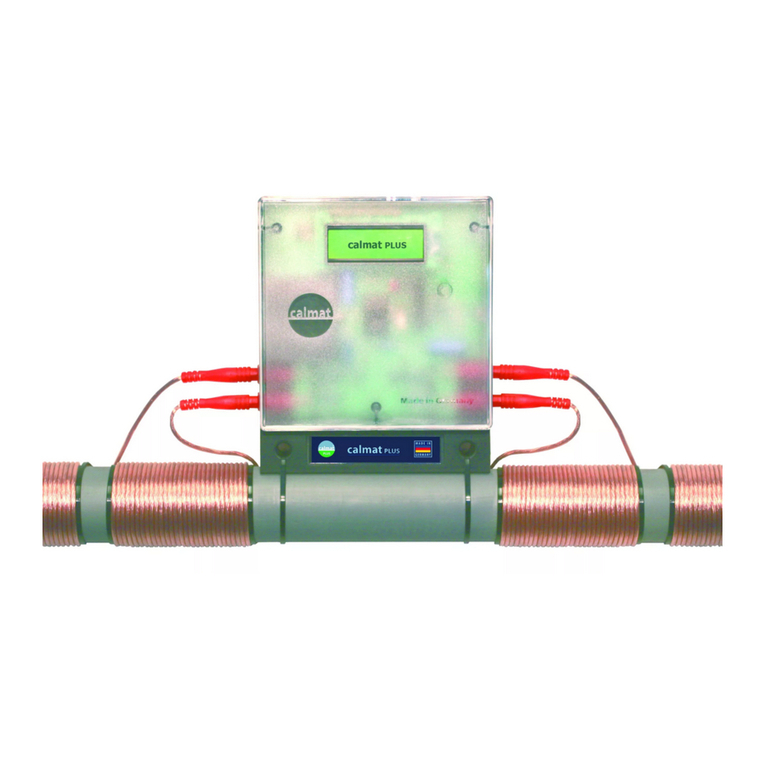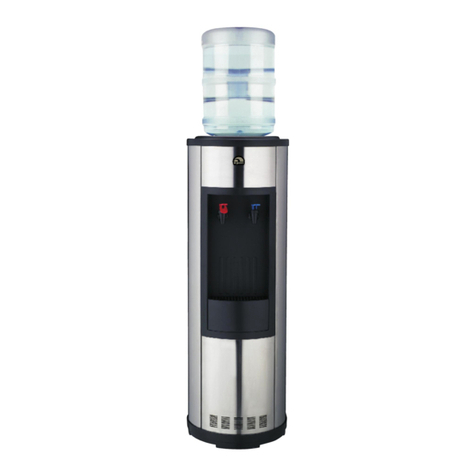1. Start by positioning your RO/DI system in the location it will be utilised in, close to an available water
source and drain connection, making sure to keep it out of weather and direct sun. For 5 & 6 stage
systems also position the DI resin stage(s) close by for connection to the system.
2. The white tube is the tap or source water line. Start by connecting one end of it to a tap water
source using the included feed water connector. The other end is then connected to your systems
Sediment filter inlet, identifiable by the small piece of white tube which comes pre-inserted (this is
just for your reference and can be discarded).
3. The red (or black) tube is the wastewater line. Connect one end of it to the RO membrane housing’s
wastewater connector, identifiable by the small piece of red (or black) tube which comes pre-
inserted (this is just for your reference and can be discarded). The water this tube produces contains
all of the contaminants that your system has rejected and should be disposed of. We recommend
directing it to a drain utilising the Wastewater Drain Connector if necessary.
4. The yellow (or blue) tube is the production water line.
A. 4 Stage Systems: This will be connected to the DI resin stage, identifiable by the small piece of
yellow tube which comes pre-inserted (this is just for your reference and can be discarded). This
tube can then be directed to your RO/DI water storage container.
B. 5 & 6 Stage Systems: This will be connected to the RO membrane housing’s production water
connecter, identifiable by the small piece of yellow tube which comes pre-inserted (this is just for
your reference and can be discarded). Measure the tube required to reach from the RO
membrane to the IN side of the DI resin stage(s). Cut it and connect the DI resin stage(s) to the
RO membrane housing. With the remaining piece of yellow tube, connect it to OUT connector
from the DI stage(s). This tube can then be directed to your RO/DI water storage container.
5. Once all connections have been made, you can turn on the feed in tap.
6. The system will now need to run for 1 hour and all water produced during this time must be
discarded. This is a good time to check for any leaks and ensure that all connections are sealed.!
This process allows the system to flush out any trapped air, preservatives used in manufacturing and
fine particles from carbon filters. The system can be used as normal after this process has been
completed.
